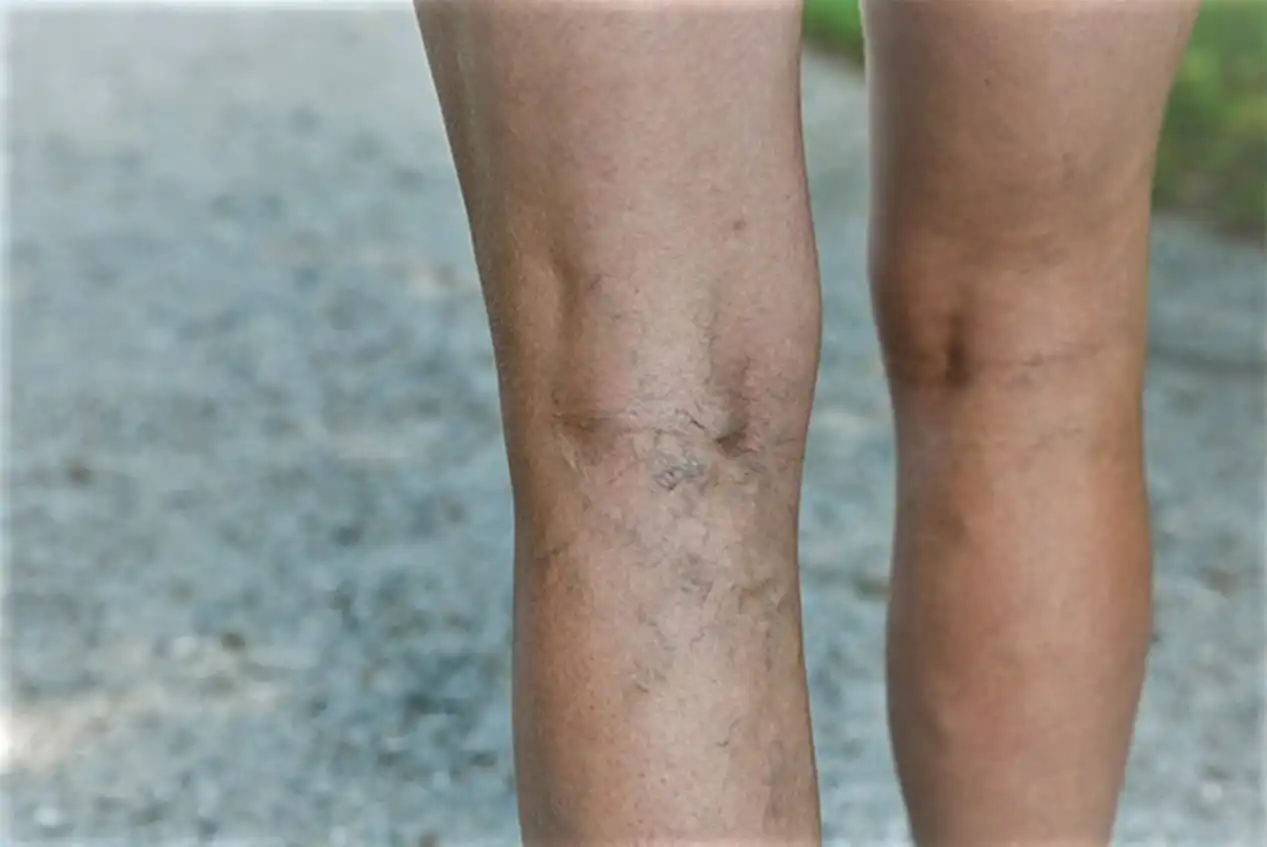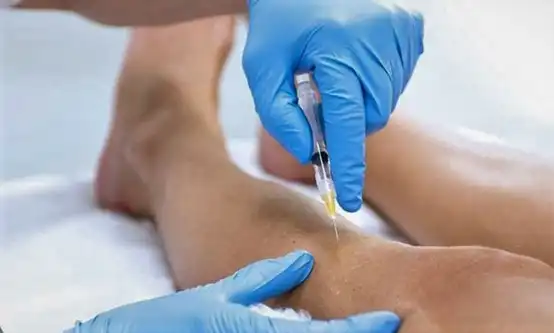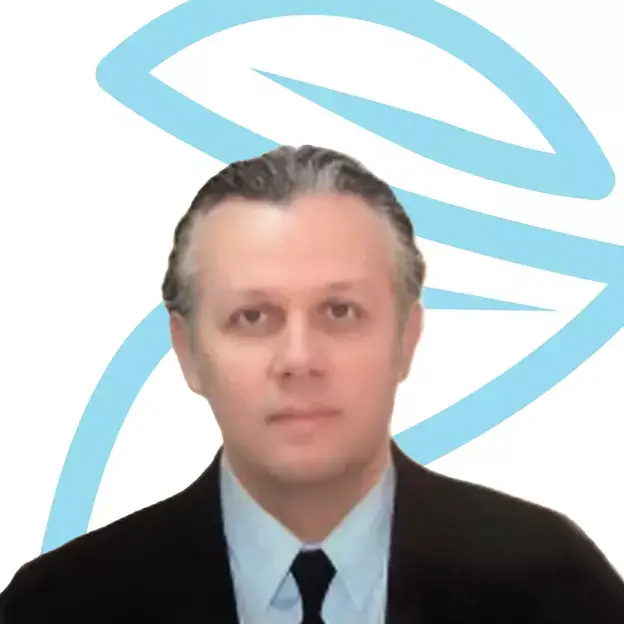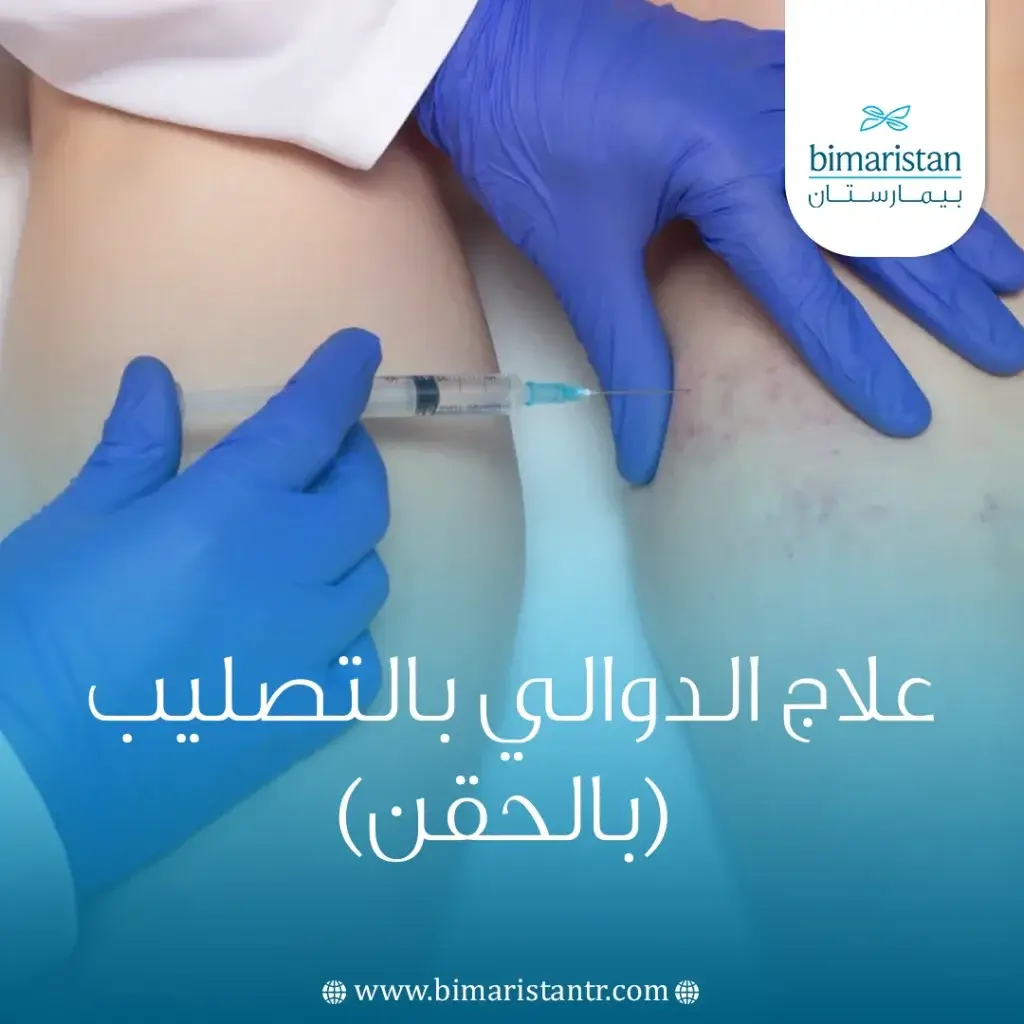علاج الدوالي بالحقن sclerotherapy يمكن علاج الدوالي الصغيرة والمتوسطة الحجم في الساقين بإجراء بسيط ونتائج ممتازة ودائمة بالإضافة إلى علاج الأوردة العنكبوتية ، تعرف على طرق علاج دوالي الساقين بالتصليب دون جراحة في تركيا ، مزاياها ومساوئها، ولمن تجرى.
عندما تقرر أن الوقت قد حان للتخلص من الأوردة العنكبوتية أو الدوالي، فإن أحد أفضل خيارات العلاج هو العلاج بالتصليب. يعتبر التصليب إجراء بسيط، ويستغرق أقل من ساعة، ويمكنك العودة إلى أنشطتك اليومية مباشرة بعد العلاج.
حدث تغيير كبير في الممارسة الطبية في السنوات العشر الماضية. تم وصف العديد من تقنيات العلاج الجديدة طفيفة التوغل ودخلت حيز الاستخدام. الهدف الرئيسي من ذلك هو تجنب الاستئصال الجراحي للدوالي، وتجنب الحاجة إلى التخدير العام، والشقوق في الساقين والدخول غرفة العمليات بالمستشفى مما يؤدي إلى التعافي السريع من العلاج. أصبح العلاج بالتصليب الرغوي الموجّه بواسطة لموجات الراديوية راسخًا كطريقة لتحقيق علاج طويل الأمد للدوالي.
ما هي الدوالي؟
يُعتقد أن الصمامات أحادية الاتجاه الغير مؤهلة في أوردة الساقين وجدران الوريد الضعيفة هي سبب توسع الأوردة وتشكل دوالي الساقين. الدم غير قادر على التدفق بشكل فعال إلى القلب، وبدلاً من ذلك يبقى في الأوردة، عادةً في الساقين. مع تراكمه في أوردة الساقين، تتوسع الأوردة وتتشكل الدوالي. لا يحتاج كل شخص مصاب بالدوالي إلى العلاج.

من هم المرضى المرشحين لعلاج دوالي الساقين؟
الأعراض التي قد تتطلب العلاج ما يلي:
- عدم الراحة في الساقين
- تورم الساقين
- الحكة
- إحساس بالحرق أو الخفقان
- سماكة الجلد
- تقرحات غير قابلة للشفاء في الساقين
- جلطات دموية سابقة
- نزيف الدوالي
خيارات علاج الدوالي الوريدية
قبل الخضوع للجراحة أو علاج الدوالي بالحقن أو علاج الدوالي بالليزر أو أي طريقة علاج آخر. يجب تجربة تغييرات نمط الحياة أولاً.
التغييرات في نمط الحياة هي تغييرات يمكنك إجراؤها على الطريقة التي تعيش بها حياتك، ولا تحتاج بشكل عام إلى تدخل طبي. يمكن أن يشمل ذلك فقدان الوزن الزائد وممارسة الرياضة ورفع الساقين وارتداء جوارب خاصة.
بعد أخذ التاريخ الطبي و الفحص السريري، يقوم طبيب متخصص في الأوعية بتصوير لفحص تدفق لدم وهيكل اوردة الساقين قبل اقتراح علاج الدوالي المناسب للحالة. قديماً، كانت العلاجات الجراحية عالية التوغل هي فقط المتاحة لإزالة الدوالي.
تجريد الوريد هي عملية يتم فيه استئصال الدوالي من قبل الجراح من خلال الشقوق. إنه ليس الخيار الأكثر تفضيلًا نظرًا لعدد الشقوق المطلوبة عادةً، وأيضًا بسبب طول وقت التعافي المطلوب.
ومع ذلك، يقدم أخصائيو الدوالي الآن خيارات جديدة لعلاج الدوالي بالليزر، والتي حلت محل الأساليب الجراحية القديمة. من أفضل الطرق الحديثة بعلاج الدوالي:
- الاستئصال الدوالي بالليزر – بمساعدة تقنية الليزر الموجهة بواسطة الموجات الرايديوية، يعد علاج الدوالي بالليزر علاجً طفيف التدخل وموافق عليه من قِبل إدارة الأغذية والعقاقير (FDA) نتائجه فورية ولا يتطلب وقتًا طويلاً للتعافي. بعد إعطاء التخدير الموضعي، يقوم أخصائي الدوالي بإدخال قسطرة صغيرة في الوريد مع توجيه بواسطة الموجات الراديوية. يتبع ذلك ألياف الليزر الصغيرة، والتي توفر طاقة ليزر خفيفة، مما يؤدي إلى إغلاق الوريد. تستغرق العملية حوالي 10 دقائق فقط ولا تحتاج دخول المستشفى .
- علاج الدوالي بالحقن sclerotherapy – خلال هذا الإجراء، يستخدم أخصائي الدوالي إبرة دقيقة لإدخال مادة تصليب في الوريد مصدق عليها من قِبل إدارة الأغذية والعقاقير (FDA). يتسبب هذا الدواء الفعال في إغلاق الوريد. بمرور الوقت، يمتص الجسم الوريد المغلق ويختفي. عادة ما يتم الانتهاء من الجلسات في العيادة، في غضون 20 د لكل ساق.
عندما يحين وقت البحث عن العلاج، يمكن لطبيب الأوعية المتخصص في علاج الدوالي والأوردة العنكبوتية وغيرها من اعراض القصور الوريدي المزمن استخدام أحدث تقنيات استئصال الدوالي والعلاج بالتصليب.
نظرًا لعدم استخدام مشارط أو خيوط جراحية في أي من العلاجين، فلا توجد ندوب أو جدرة طويلة الأمد.
هناك قدر ضئيل من الانزعاج، وتتميز معظم العلاجات بأنها غير مؤلمة تقريبًا. ويمكن لمعظم الأشخاص استئناف أنشطتهم اليومية فورًا بعد العلاج.
ما هو علاج الدوالي بالحقن ( علاج الدوالي بالتصليب )
يستخدم علاج الدوالي بالحقن sclerotherapy لعلاج دوالي الأوردة و “الأوردة العنكبوتية”. أثناء العلاج بالتصليب، يحقن الطبيب المحلول مباشرة في الوريد المصاب. يتسبب المحلول في تهيج بطانة الوعاء، ممايؤدي إلى تضخمها والالتصاق ببعضها البعض. بمرور الوقت، يتحول الوعاء إلى نسيج ندبي يتلاشى عن الأنظار. علاج الدوالي بالتصليب هو اجراء مثبت جيدًا وقد تم استخدامه منذ ثلاثينيات القرن الماضي.

ما مدى نجاح علاج الدوالي بالحقن والأوردة العنكبوتية؟
علاج الدوالي بالحقن sclerotherapy فعال لدى معظم المرضى. تشير التقديرات إلى أنه يمكن القضاء على ما بين 50 و80٪ من الوريد المحقون في كل جلسة. قلة من الناس (أقل من 10٪) ممن خضعوا لعلاج الدوالي بالتصليب لا يستجيبون للحقن على الإطلاق. في هذه الحالات، يمكن تجربة حلول مختلفة أو طريقة مختلفة في العلاج، مثل العلاج بالليزر.
تستجيب الدوالي الصغيرة (العنكبوتية) للعلاج في غضون 3 إلى 6 أسابيع، وتستجيب الدوالي الكبيرة في غضون 3 إلى 4 أشهر. إذا استجابت الدوالي للعلاج، فعادة لاتظهر مرة أخرى. ومع ذلك، قد تظهر عروق جديدة بمرور الوقت. إذا لزم الأمر، يمكنك العودة للحقن.
هل أنا مرشح لعلاج الدوالي بالحقن ؟
قبل الإجراء، ستلتقي بأخصائي الأوعية الدموية الذي سيقيم أهليتك لعلاج الدوالي بالحقن
تعد غير مؤهل لعلاج الدوالي بالحقن sclerotherapy إذا كنتِ حاملاً أو مرضعة أو طريحة الفراش. يجب عليكِ الانتظار 3 أشهر على الأقل بعد الولادة قبل أن يتم النظر في هذا الإجراء.
يمكنك الحصول على العلاج بالتصليب إذا كنت تأخذين حبوب منع الحمل. اما إذا كنتِ قد أصبت بجلطة دموية في الماضي، فسيعتمد ذلك على سبب حدوث الجلطة ومدى خطورتها.
علاج الدوالي بالتصليب وتفاصيل الإجراء
كيف يتم علاج دوالي الساقين بالحقن sclerotherapy ؟
تجرىعلاج الدوالي بالحقن sclerotherapy في عيادة الطبيب. يتم تطهير منطقة العلاج. يجرى حقن المحلول مباشرة في الأوعية الدموية باستخدام إبر دقيقة للغاية.
يعتمد عدد الأوردة المحقونة في جلسة واحدة على حجم الأوردة وموقعها والحالة الطبية العامة للمريض. قد تشعر بانزعاج خفيف عند حقن الأوردة، وإحساس بالتشنج لمدة 1-2 د عند حقن وريد كبير.
كيف يتم التحضير قبل علاج الدوالي بالحقن
يشمل التحضير لعلاج الدوالي العديد من الإرشادات إليك بعضها:
الأدوية: قبل علاج الدوالي بالتصليب، يجب تجنب بعض الأدوية. يرجى اتباع هذه الإرشادات:
- التتراسيكلين أو مينوسين، وكلاهما من المضادات الحيوية، قد يسبب حساسية للجلد إذا تم تناول أحد هذه الأدوية قبل أو بعد العلاج بالتصليب من 7 إلى 10 أيام. اسأل طبيبك عن أدوية المضادات الحيوية الأخرى التي قد تتناولها، أو اطلب إرشادات آمنة للتوقف عن تناول هذه الأدوية. إذا كنت مطالبًا بتناول مضاد حيوي قبل أي اجراء جراحي، مثل إجراءات الأسنان أو تنظير القولون أو الجراحة، فيرجى إبلاغ طبيبك.
- لا تتناول الأسبرين أو الأدوية الأخرى المضادة للالتهابات لمدة 48 ساعة قبل وبعد العلاج بالتصليب، لأن هذه الأدوية قد تتداخل مع عمل مادة التصليب أو تزيد من النزيف. تايلينول® مسموح به. اسأل طبيبك عن إرشادات محددة قبل التوقف عن تناول أي دواء.
- بريدنيزون يجعل المادة المستخدمة بالتصليب أقل فعالية. اسأل الطبيب الذي وصف بريدنيزون الخاص بك إذا كان من الممكن إيقافه بأمان لمدة 48 ساعة قبل المعالجة بالتصليب.
إرشادات أخرى قبل علاج الدوالي بالحقن
- يجب عدم وضع أي غسول على الساقين قبل المعالجة بالتصليب أو بعدها.
- نوصي بإحضار زوج من السراويل القصيرة لارتدائها أثناء العملية.
- إذا كان لديك جوارب ضاغطة (جوارب داعمة) من علاج الدوالي السابق، فيرجى إحضارها معك حتى نتمكن من التأكد من أنها ستوفر الدعم الكافي بعد الإجراء.
ما هي مدة علاج الدوالي بالحقن sclerotherapy ؟
تستغرق المعالجة بالتصليب حوالي نصف ساعة إلى ساعة.
ماذا يحدث بعد العلاج بالتصليب ( بالحقن )؟
بعد العلاج، ستتمكن من القيادة بنفسك إلى المنزل. يمكنك استئناف أنشطتك المعتادة ويتم تشجيعك على المشي.
سيطلب منك الطبيب ارتداء جوارب داعمة لضغط الاوعية المعالجة. تأكد من مدى فعالية جواربك الضاغطة واسأل طبيبك عنها.
لمدة 48 ساعة بعد الإجراء، يرجى اتباع الإرشادات التالية:
- تجنب الأسبرين والأيبوبروفين والأدوية الأخرى المضادة للالتهابات. يمكن استخدام تايلينول® إذا لزم الأمر لتخفيف الآلام.
- لا تأخذ حمامًا ساخنًا أو تجلس في الجاكوزي أو الساونا. يمكنك الاستحمام، لكن الماء يجب أن يكون أكثر برودة من المعتاد.
- اغسل مواضع الحقن بصابون معتدل وماء فاتر.
- لا تضع كمادات ساخنة أو أي شكل من أشكال الحرارة على المناطق المحقونة.
- تجنب التعرض المباشر لأشعة الشمس .
تواصل مع الطبيب إذا كان لديك أي مخاوف أو أسئلة بعد الإجراء.
العلاج بالتصليب الموجه بالسونار (UGS) هو إجراء متخصص للغاية لعلاج دوالي الساقين المتقدمة المخفية تحت الجلد.
هذا الإجراء فعال للغاية ويتضمن حقن محلول متصلب في الأوردة المتوسعة بتوجيه الموجات الراديوية، ممايؤدي إلى انهيار جدار الوريد. تذوب الأوردة وتختفي بينما يمتصها الجسم تدريجيًا.
كيف يجرى علاج الدوالي بالحقن الموجه بالسونار؟
يجرى فحص مفصل بالسونار قبل الإجراء لإنشاء خريطة افتراضية لأوردة الساقين. تعرض هذه الخريطة بدقة جميع الأوردة غير الطبيعية، بالإضافة إلى الهياكل المجاورة مثل الأوردة العميقة والشرايين، وتساعد اختصاصي الأوردة على تحديد السبب للدوالي المرئية.
بعد الفحص بالسونار، يستلقي المريض بوضعية مريحة على سرير العلاج مع كشف الساقين. من خلال التوجيه بالسونار، يمكن للطبيب توجيه الإبرة بدقة وحقن الأوردة غير الطبيعية المخفية، أثناء مراقبة العملية على الشاشة.
بمجرد الحقن، ينهار الوعاء المعالج ويمتصه الجسم تدريجيًا، ويختفي مع مرور الوقت. سيكون هناك حاجة لعدد من الحقن على طول الوريد لتحقيق الإغلاق الكامل.
من المزايا المهمة لهذه الطريقة أنها تسمح لأخصائي الاوعية بمراقبة تأثير كل حقنة، مع ضمان سلامة جميع الهياكل المجاورة. إن استخدام مادة التصلب كرغوة، بدلاً من محلول، جعل هذا الإجراء أكثر فعالية.
ماذا يحدث بعد علاج الدوالي بالحقن الموجه بالموجات فوق الصوتية؟
يستغرق العلاج عادة نصف ساعة، ولكن يتم تخصيص ساعة واحدة لإتاحة الوقت الكافي للفحص بالسونار، وشرح الإجراء للمريض. بعد هذا الإجراء، يتم تزويدك بعد العملية بجوارب ضغط متدرجة من الدرجة الثانية ويطلب منهم المشي لمدة 30-40 د لتعزيز تدفق لدم إلى الأوردة العميقة.
يتم تحديد موعد مراجعة عند الطبيب عادةً بعد أسبوع واحد من العلاج بالحقن. في موعد المراجعة هذا، يجري الطبيب فحص أخر بالسونار للتأكد من أن العلاج بالحقن كان ناجحًا ويتم حقن أي عنكبوت أو دوالي متبقية باستخدام تقنية العلاج المجهري.
ما هي الآثار الجانبية لعلاج دوالي الساقين بالتصليب ( بالحقن )؟
قد تشمل الآثار الجانبية لعلاج الدوالي بالحقن sclerotherapy ما يلي:
- الأوردة المحقونة قد تصبح متكتلة أو صلبة لعدة أشهر قبل أن تتحسن.
- مناطق حمراء مرتفعة في مواقع الحقن ويجب أن تختفي في غضون أيام قليلة.
- خطوط أو بقع بنية اللون على الجلد في موقع الحقن، وربما يكون سببها نوع من الحديد يتسرب من الدم في الأوردة المحقونة. في معظم الحالات، تختفي في غضون 3 إلى 6 أشهر، ولكن حوالي 5 ٪ من الحالات تبقى دائما.
- قد تحدث كدمات حول مكان الحقن ويمكن أن تستمر عدة أيام أو أسابيع.
- قد تتطور أوعية دموية صغيرة مؤقتة في المنطقة المعالجة. وهذا ما يسمى إعادة تكوين الاوعية الدموية أو “الاحمرار”. قد تظهر بعد أيام أو أسابيع من العلاج بالحقن، لكن يجب أن تتلاشى في غضون بضعة أشهر وعادة لا تتطلب مزيدًا من العلاج.
- ردود الفعل التحسسية تجاه عامل التصليب قد تحدث في وقت الحقن ونادرًا ما تكون خطيرة. تشمل الأعراض الحكة والتورم.
نادرا ماتظهر الآثار الجانبية الأخرى بعد علاج الدوالي بالحقن. إذا كان لديك أي من هذه الآثار الجانبية النادرة، يرجى الاتصال بطبيبك على الفور:
- التهاب (تورم) في الفخذ.
- انتفاخ مغاجئ في الساق .
- تقرحات صغيرة في موقع الحقن.
- خط أحمر، خاصة في منطقة الفخذ.
ماهي نتائج العلاج بالتصليب الرغوي الموجه بالموجات فوق الصوتية؟
تشير نتائج الدراسات إلى أن 80-90٪ من الأوردة تغلق دائما بواسطة العلاج بالحقن عند فحصها بعد خمس سنوات بالسونار. هذا مشابه لمعدل النجاح لتقنيات جديدة أخرى. وجدت التجارب السريرية التي قارنت الجراحة والعلاج بالتصليب الرغوي sclerotherapy والاستئصال بالليزر واستئصال بالترددات الراديوية أن النتائج التي تم تقييمها إكلينيكيًا وأبلغ المريض عنها متطابقة.
مميزات علاج الدوالي بالحقن sclerotherapy
- تجنب الجراحة الوريد ولا يكون هناك شعور بعدم الراحة بعد العلاج بالحقن.
- وجود كدمات أقل بكثير من الجراحة .
- ليست هناك حاجة للتخدير العام، أو شق في الساقين، أو دخول المستشفى أو غرفة العمليات.
- لا توجد ندوب.
- إعادة علاج الدوالي الأخرى أمر بسيط.
- أقل كلفة من العلاج لجراحي.
- عدم الحاجة إلى إجازة من العمل بعد العلاج بالحقن.
سيئات علاج الدوالي بالحقن sclerotherapy
- ينتج عن العلاج بالحقن انزعاج خفيف في الساق قد يستمر لمدة 2-4 أسابيع.
- كما ينتج عنه كدمات خفيفة وبعض الكتل التي قد تستمر لعدة أسابيع بعد العلاج بالحقن. ومع ذلك، يعتبر هذان العرضان من مضاعفات العلاج الجراحي للدوالي.
- قد تستغرق النتيجة النهائية لعلاج دوالي الساقين بالحقن عدة أشهر لتتطور بعد العلاج، اما نتائج جراحة الدوالي أسرع.
يبقى مركز بيمارستان الطبي خيارك الأول للعلاج في تركيا.
نوجهك لأفضل الاختصاصين الخبراء بكافة المجالات، نكسر حاجز اللغة أطباء متخصصين عرب سيساعدونك في التواصل مع طبيبك، نساعدك بحجز الموعد بأهم وأحدث المشافي في تركيا ، نقدم خدماتنا لتأمين حجز فندقي لك و لمرافقينك إضافة للمواصلات للتنقل، نساعدك في تأمين تأشيرة السفر لك مجاناً.
نقدم خدماتنا على امتداد تركيا ، فالمكان الأفضل بتقديم العلاج لك هو وجهتنا.
نرافقك خطوة بخطوة نحو الشفاء.
استشارات مجانية على مدار الساعة.
لا تتردد بالتواصل معنا، مركز بيمارستان عائلتك في تركيا. للحصول على أفضل طريقة لـ علاج الدوالي بالتصليب للساقين في تركيا أو بالحقن على يد أمهر أطباء الجراحة الوعائية أو التجميلية دون حصول أي آثار جانبية وبنائج مضمونة وبأسعار مناسبة.

